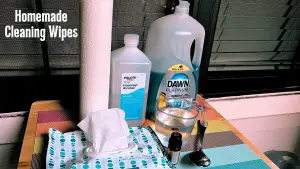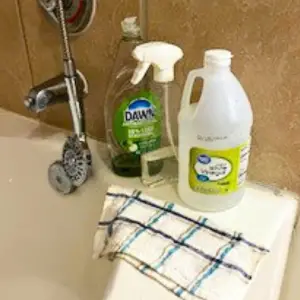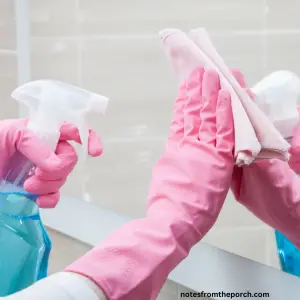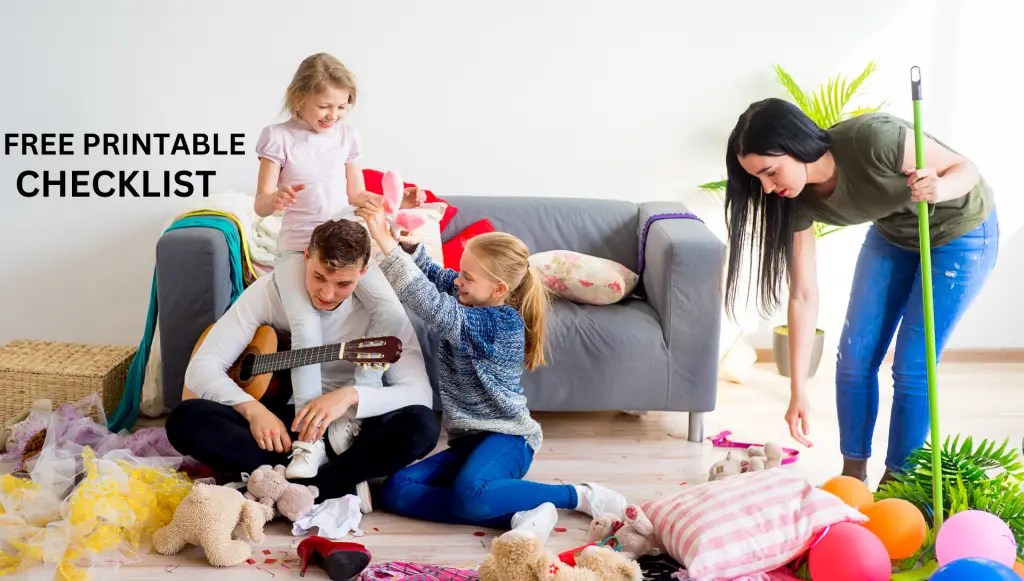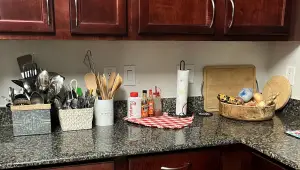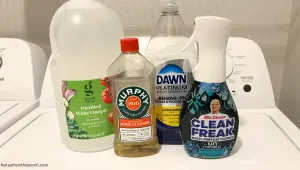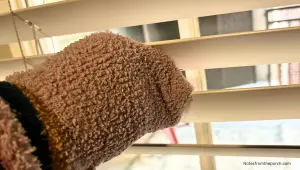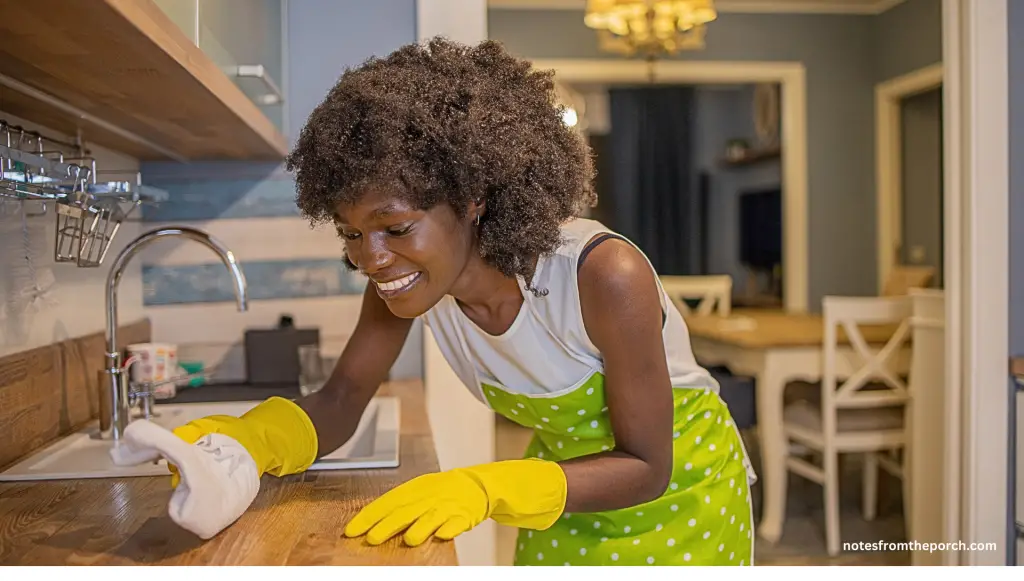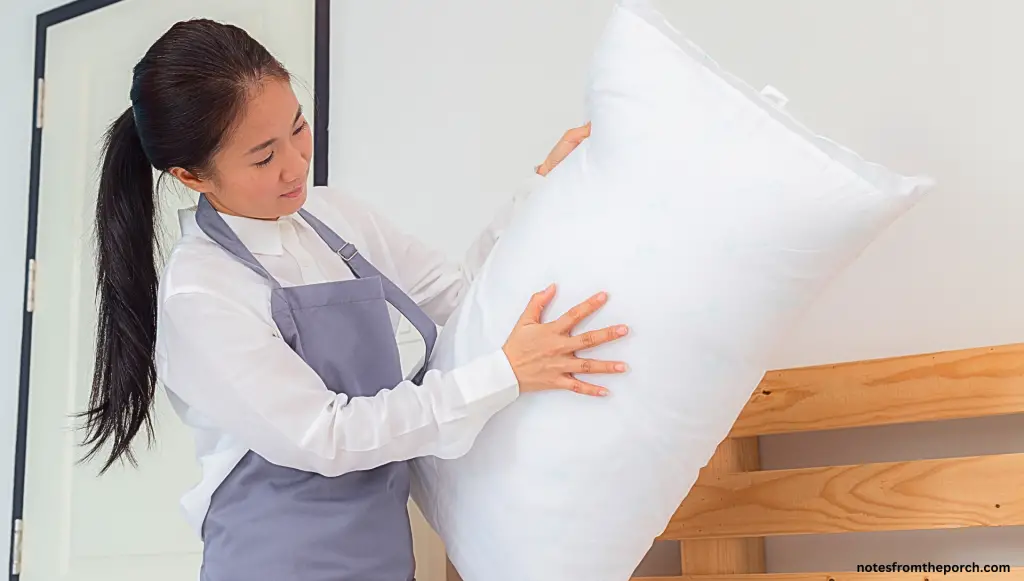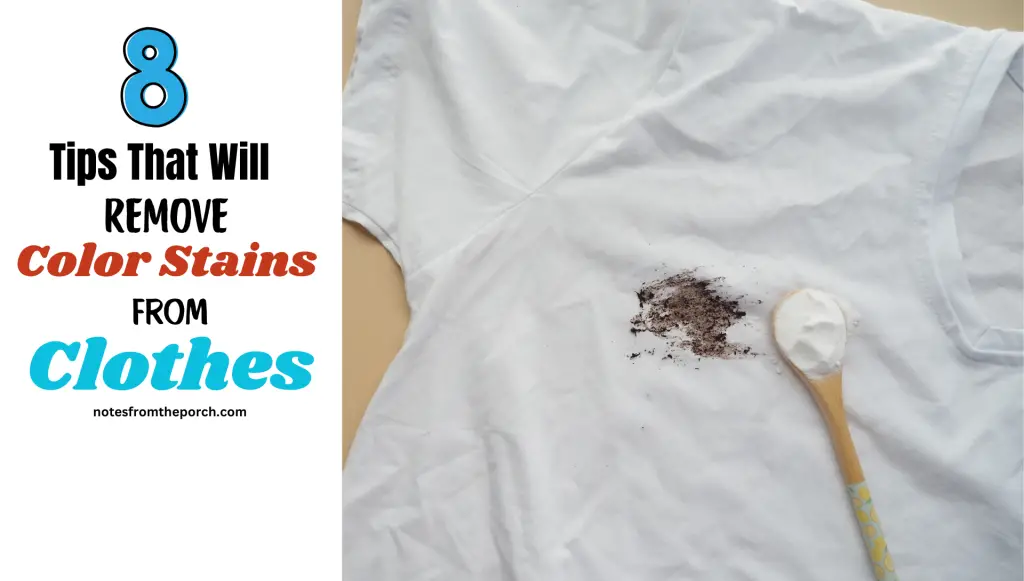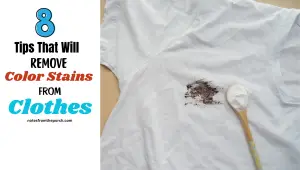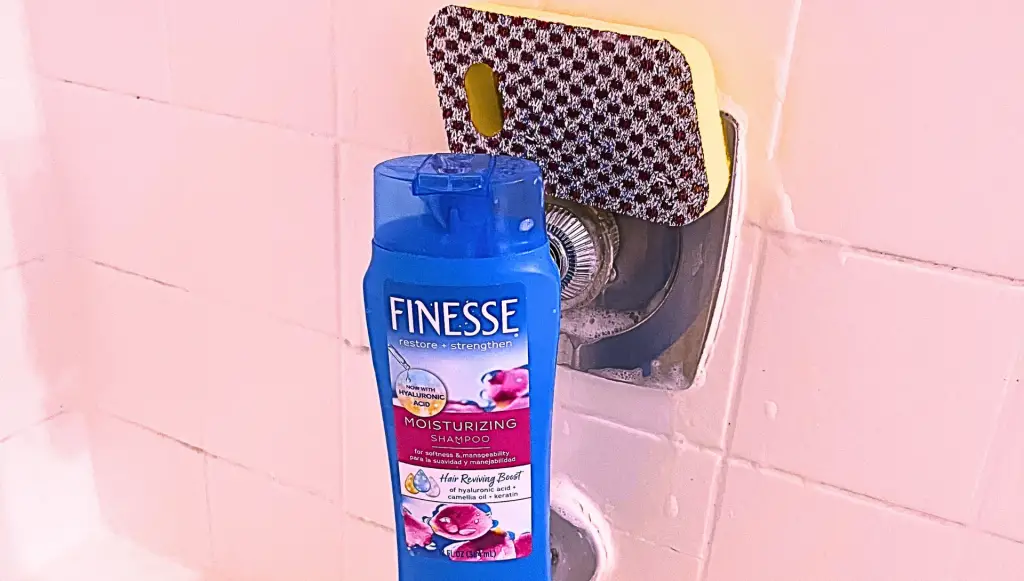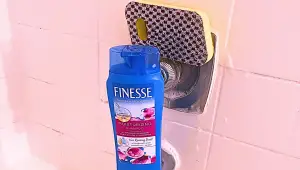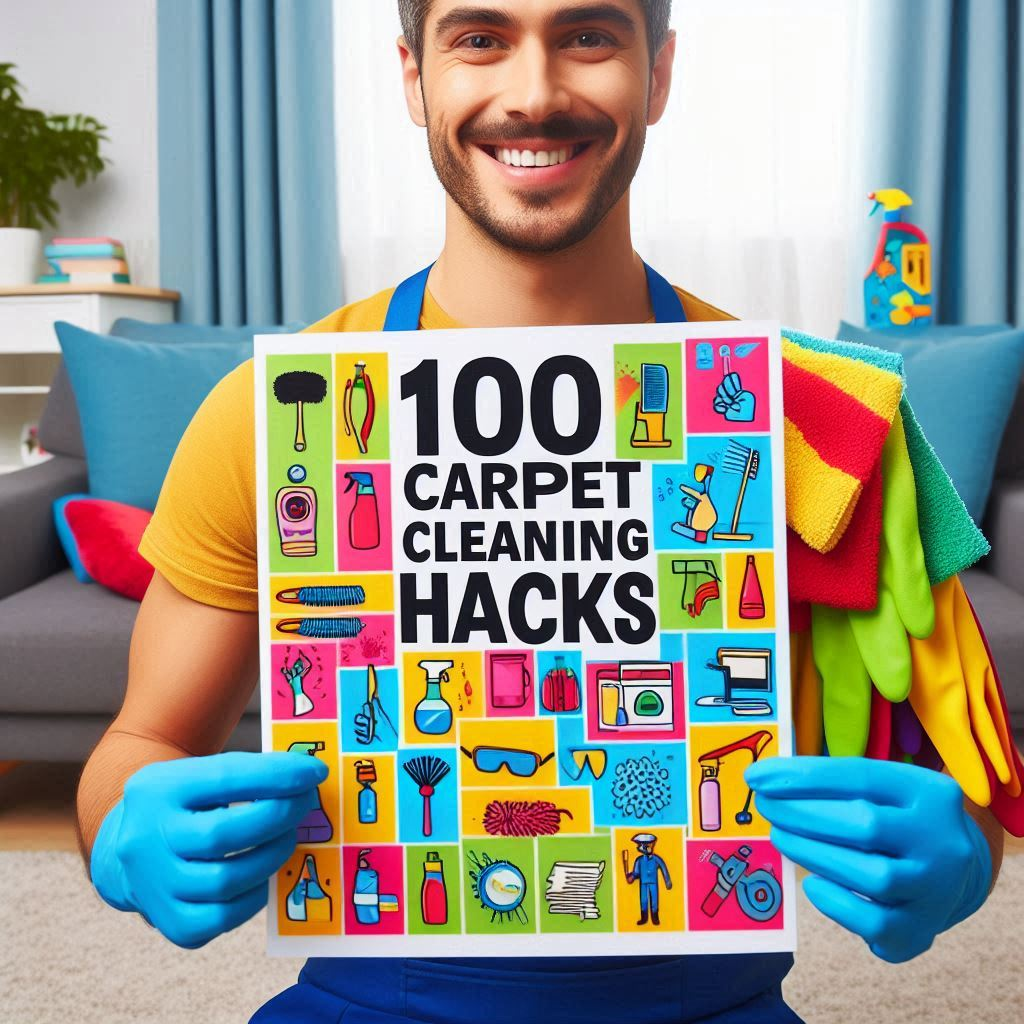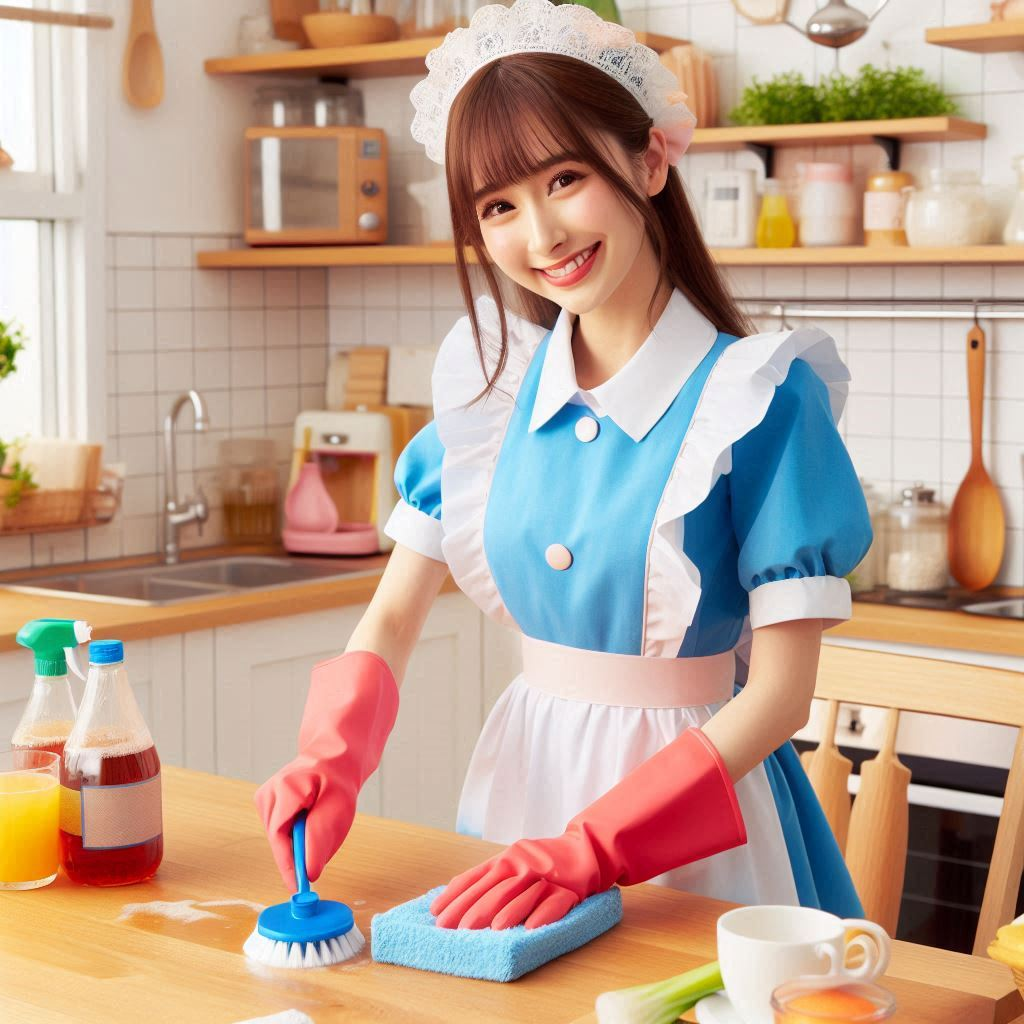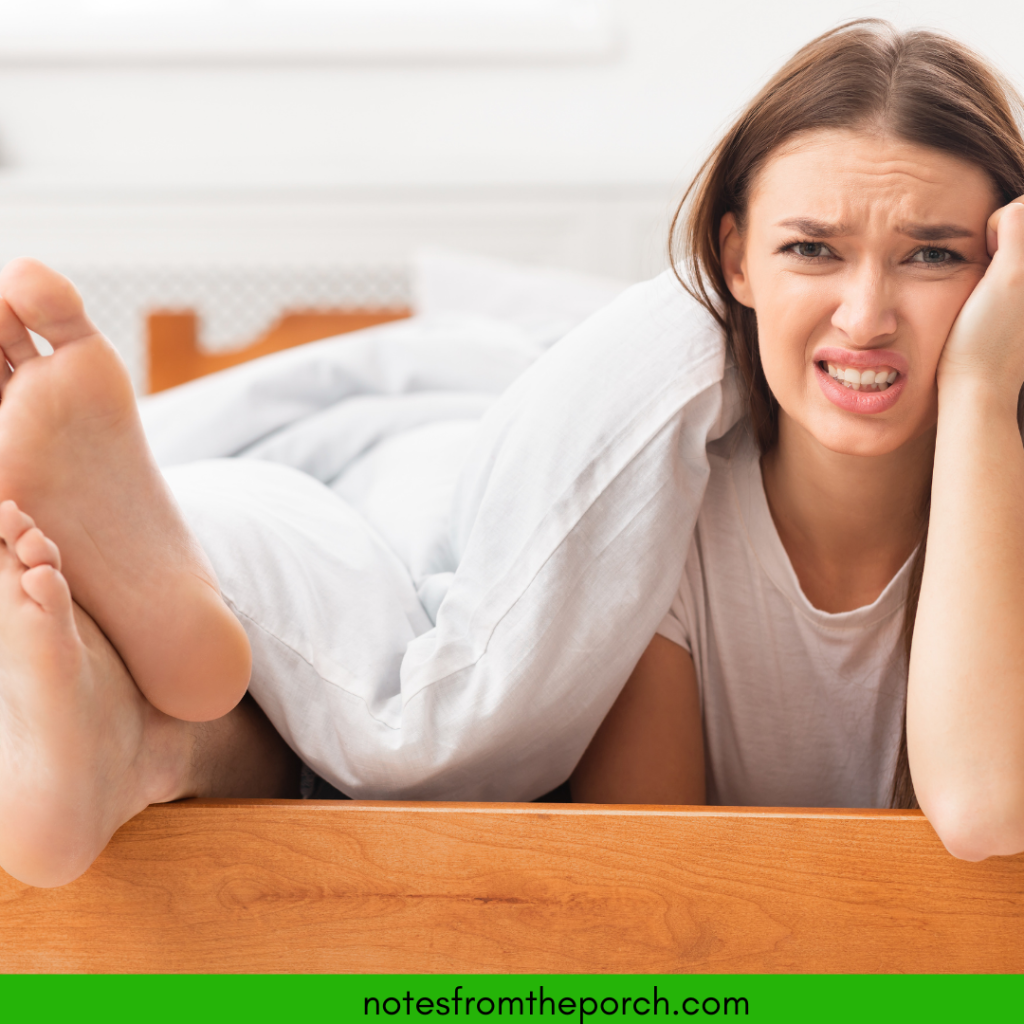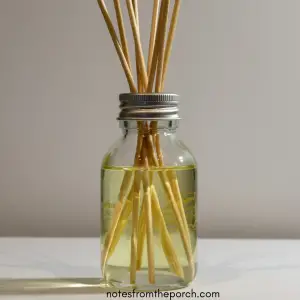
Welcome to your ultimate resource for keeping your kitchen immaculate! Whether you’re an avid home cook or just looking to maintain a clean space, this guide offers 145 kitchen cleaning hacks to ensure every nook and cranny is spotless. With these tips, you’ll tackle kitchen messes like a pro and enjoy a sparkling clean cooking environment. Let’s get started!
1. Countertop Care
1. Granite and Marble Countertops: Use a mixture of warm water and a few drops of mild dish soap. Avoid acidic cleaners. For tough stains, make a paste of baking soda and water.
2. Laminate Countertops: Clean with a mix of equal parts vinegar and water. For stubborn stains, apply a paste of baking soda and water, scrub, and rinse.
3. Wooden Countertops: Use a mixture of warm water and dish soap. For deeper cleaning, apply a mixture of salt and lemon juice, then scrub and wipe clean.
4. Removing Stains: For ink or marker stains, use rubbing alcohol. For coffee or tea stains, a paste of baking soda and water works wonders.
5. Polishing: Use a mixture of olive oil and vinegar to polish and shine surfaces.
2. Stove and Oven Cleaning
6. Gas Stove Burners: Soak burners in warm, soapy water for 30 minutes, then scrub. For tough grease, use a baking soda paste.
7. Electric Stove Tops: For glass tops, use a mixture of baking soda and water. For coil burners, remove and wash with soap and water.
8. Oven Racks: Soak in a bathtub with hot water and dish soap. Scrub with a brush and rinse.
9. Oven Door: Use a paste of baking soda and water to clean the glass. Let it sit for 15 minutes, then wipe clean.
10. Oven Interior: For deep cleaning, apply a baking soda paste, leave overnight, and wipe with vinegar and water.
11. Self-Cleaning Ovens: Follow the manufacturer’s instructions and wipe down with a damp cloth afterward.
3. Microwave Maintenance
12. Removing Odors: Heat a bowl of water with lemon slices for 5 minutes, then wipe down the interior.
13. Cleaning Splatter: Use a damp cloth to wipe down after heating the lemon water.
14. Steam Clean: Microwave a bowl of water and vinegar for 5 minutes to loosen grime, then wipe clean.
15. Exterior Cleaning: Wipe with a mixture of dish soap and water. Use a vinegar solution for stainless steel.
16. Microwave Plate: Remove and wash the plate in warm, soapy water.
4. Refrigerator and Freezer Freshness
17. Deodorizing the Fridge: Place an open box of baking soda inside. Replace every three months.
18. Cleaning Spills: Use a mixture of water and vinegar to wipe down shelves and drawers.
19. Defrosting the Freezer: Place a bowl of hot water inside to help melt ice, then wipe clean.
20. Organizing the Fridge: Use clear containers and labels to organize food.
21. Cleaning the Door Seals: Wipe with a mixture of baking soda and water to remove dirt and prevent mold.
22. Cleaning the Coils: Use a vacuum cleaner to remove dust from the coils at the back of the fridge.
23. Icemaker Maintenance: Run a mixture of vinegar and water through the ice maker to clean it.
24. Refrigerator Light: Dust the light bulb and cover to ensure proper lighting.
25. Checking Expiry Dates: Regularly check and dispose of expired items to prevent odors.
5. Sink and Faucet Sparkle
26. Unclogging the Sink: Use a mix of baking soda and vinegar, followed by hot water.
27. Removing Rust Stains: Apply a paste of baking soda and water, let sit, then scrub.
28. Shining the Faucet: Clean with vinegar, then buff with a dry cloth.
29. Sink Drain Freshener: Pour a cup of baking soda, followed by hot vinegar, to deodorize.
30. Hard Water Stains: Remove with a mixture of vinegar and water.
31. Disinfecting the Sink: Use a mixture of bleach and water to disinfect. Rinse thoroughly.
32. Cleaning the Aerator: Remove and soak in vinegar to remove mineral deposits.
33. Garbage Disposal Freshener: Grind ice cubes and lemon peels to clean and deodorize.
34. Stainless Steel Sink: Use a mixture of baking soda and water to scrub, then rinse and dry.
35. Preventing Soap Scum: Wipe down the sink and faucet with a dry cloth after use.
6. Dishwashing Hacks
36. Pre-soaking Dishes: Soak dishes in warm, soapy water before washing to remove stuck-on food.
37. Removing Grease: Use baking soda and dish soap to scrub greasy pots and pans.
38. Cleaning Dish Racks: Soak in a mixture of water and vinegar, then scrub with a brush.
39. Dishwasher Maintenance: Run an empty cycle with vinegar to clean and deodorize.
40. Stubborn Stains: Use a paste of baking soda and water on tough stains.
41. Cleaning Glassware: Use vinegar to remove water spots and make glassware sparkle.
42. Removing Food Odors: Add lemon juice to the dishwasher for a fresh scent.
43. Silverware Cleaning: Soak silverware in a mixture of baking soda and water to remove tarnish.
44. Cutting Board Cleaning: Rub with lemon and salt to remove stains and odors.
45. Dish Brush Maintenance: Soak in vinegar to disinfect and remove food particles.
46. Avoiding Water Spots: Use a towel to dry dishes immediately after washing.
47. Dishwashing Gloves: Use gloves to protect your hands and keep them dry.
48. Dishwashing Soap Storage: Use a pump dispenser to control the amount of soap used.
49. Alternative to Sponges: Use dishcloths or brushes, which are easier to clean and disinfect.
50. Avoiding Bacteria Growth: Replace dish sponges regularly to prevent bacteria buildup.
7. Floor Care
51. Tile Floors: Clean with a mixture of warm water and dish soap. Scrub grout with baking soda paste.
52. Wood Floors: Use a wood floor cleaner or a mixture of dish soap and warm water.
53. Laminate Floors: Clean with a mixture of water and vinegar, but avoid excess moisture.
54. Vinyl Floors: Use a mixture of dish soap and water. For scuffs, use a tennis ball.
55. Stain Removal: Use baking soda and water paste on tough stains, then rinse.
56. Polishing: Use a store-bought polish or a mixture of olive oil and vinegar for a natural shine.
57. Cleaning Baseboards: Wipe with a damp cloth and use a toothbrush for corners.
58. Preventing Scratches: Use mats or rugs in high-traffic areas to protect the floor.
59. Deodorizing Carpets: Sprinkle baking soda on carpets, let sit, then vacuum.
60. Mopping Tips: Always wring out the mop well to avoid excess water on floors.
61. Storing Cleaning Supplies: Keep floor cleaning supplies in a designated area for easy access.
8. Cabinets and Drawers
62. Removing Grease: Use a mixture of baking soda and water to clean cabinet surfaces.
63. Polishing Wood Cabinets: Use a mixture of vinegar and olive oil to polish and protect.
64. Cleaning Glass Doors: Use a mixture of vinegar and water to clean glass cabinet doors.
65. Organizing Drawers: Use drawer organizers or baskets to keep items in place.
66. Cleaning Drawer Liners: Replace or wash drawer liners regularly to keep them fresh.
67. Dusting: Use a microfiber cloth to dust cabinet tops and shelves.
68. Odor Control: Place a bowl of baking soda in cabinets to absorb odors.
69. Cleaning Handles and Knobs: Wipe down with a mixture of dish soap and water.
70. Fixing Squeaky Hinges: Use a small amount of petroleum jelly on hinges.
71. Preventing Pests: Store food in airtight containers and keep cabinets clean.
72. Deep Cleaning: Remove everything from cabinets periodically for a thorough cleaning.
73. Labeling: Label containers and shelves for easy organization.
74. Decluttering: Regularly declutter cabinets to avoid accumulation of unused items.
9. Small Appliances
75. Toaster: Unplug and remove the crumb tray. Shake out crumbs and clean with soapy water.
76. Blender: Fill with warm water and dish soap, then blend to clean. Rinse thoroughly.
77. Coffee Maker: Run a cycle with equal parts water and vinegar, followed by two cycles with water.
78. Microwave: Steam clean with water and lemon, then wipe down.
79. Electric Kettle: Boil water with vinegar to remove mineral deposits, then rinse well.
80. Mixer: Wipe down with a damp cloth and clean attachments in warm, soapy water.
81. Air Fryer: Clean the basket and tray with warm, soapy water. Wipe the interior with a damp cloth.
82. Slow Cooker: Remove the insert and wash with warm, soapy water. Wipe the exterior with a damp cloth.
83. Food Processor: Disassemble and wash all parts with warm, soapy water.
84. Ice Cream Maker: Clean all parts with warm, soapy water after use.
85. Rice Cooker: Wipe down the exterior and clean the pot with warm, soapy water.
86. Waffle Maker: Wipe down with a damp cloth. For stuck-on batter, use a wooden utensil to scrape.
87. Toaster Oven: Remove and wash the tray and racks. Wipe the interior with a damp cloth.
88. Popcorn Maker: Wipe the interior and exterior with a damp cloth. Clean removable parts with soapy water.
89. Juicer: Disassemble and clean all parts with warm, soapy water immediately after use.
90. Bread Maker: Wipe down the exterior and clean the bread pan and kneading blade with warm, soapy water.
10. Air Freshening Tips
91. Natural Air Fresheners: Use baking soda or activated charcoal to absorb odors.
92. Simmering Potpourri: Simmer water with lemon peels, cinnamon sticks, or cloves.
93. Essential Oils: Use a diffuser with essential oils like lavender or lemon to freshen the air.
94. Fresh Flowers: Place a bouquet of fresh flowers in the kitchen for a natural fragrance.
95. Scented Candles: Light candles to add a pleasant scent to the kitchen.
96. Ventilation: Open windows or use an exhaust fan to reduce cooking odors.
97. Cleaning the Trash Can: Wipe down with a vinegar solution and sprinkle baking soda at the bottom.
98. Regular Trash Removal: Empty the trash frequently to prevent odors.
99. Refrigerator Deodorizers: Use activated charcoal or baking soda to absorb fridge odors.
100. Cleaning Sponges: Microwave wet sponges for 1-2 minutes to kill bacteria and remove odors.
101. Dryer Sheets: Place a dryer sheet at the bottom of the trash can to keep it smelling fresh.
102. Boiling Vinegar: Boil vinegar on the stove to neutralize strong odors.
103. Citrus Peels: Place dried citrus peels in the garbage disposal to freshen it.
104. Baking Soda Paste: Use a paste of baking soda and water to clean and deodorize surfaces.
105. Coffee Grounds: Place used coffee grounds in a bowl to absorb kitchen odors.
106. Vinegar and Bread: Soak bread in vinegar and leave it in the kitchen overnight to absorb odors.
107. Air Purifiers: Use an air purifier to filter out kitchen odors and improve air quality.
108. Fresh Herbs: Place potted herbs like mint or basil in the kitchen for a fresh scent.
109. Activated Charcoal Bags: Use activated charcoal bags to absorb odors in the kitchen.
110. Houseplants: Certain houseplants, like spider plants and aloe vera, can help purify the air.
111. Homemade Air Freshener Spray: Mix water, vodka, and essential oils in a spray bottle for a DIY air freshener.
112. Open Windows: Keep windows open while cooking to let fresh air in and reduce odors.
113. Lemons in Garbage Disposal: Grind lemon peels in the garbage disposal to eliminate odors.
114. Vinegar in Dishwasher: Run an empty dishwasher with vinegar to remove odors and clean it.
115. Cinnamon Boil: Boil cinnamon sticks in water to create a warm, inviting scent.
116. Baking Soda in Fridge: Place an open box of baking soda in the fridge to absorb food odors.
117. Scented Sachets: Place sachets filled with dried herbs or flowers in cabinets or drawers.
118. Fresh Lemon Wipes: Wipe down surfaces with a cloth dipped in lemon juice for a fresh scent.
119. Activated Charcoal in Trash Can: Place activated charcoal at the bottom of the trash can to absorb odors.
120. Orange Peel Vinegar: Soak orange peels in vinegar for a few weeks, then use the mixture to clean and freshen.
121. Eucalyptus Leaves: Hang eucalyptus leaves in the kitchen for a refreshing scent.
122. DIY Potpourri: Create your own potpourri with dried flowers, herbs, and spices.
123. Baking Soda and Essential Oils: Mix baking soda with a few drops of essential oils and sprinkle on carpets before vacuuming.
124. Fresh Air Spray: Create a spray with water and essential oils to freshen up the air.
125. Baking Soda and Cinnamon: Mix baking soda and cinnamon, and sprinkle on carpets or rugs for a pleasant scent.
126. Vinegar and Citrus Peels: Soak citrus peels in vinegar for a few weeks, then use as a natural cleaner.
127. Fresh Coffee Grounds: Use fresh coffee grounds to neutralize odors in the kitchen.
128. Vanilla Extract: Dab a cotton ball in vanilla extract and place in a bowl to freshen up the kitchen.
129. Fresh Pine Needles: Place fresh pine needles in a bowl to bring a forest-fresh scent to the kitchen.
130. Vinegar and Essential Oils: Mix vinegar with a few drops of essential oils to create a natural air freshener.
131. Cinnamon and Nutmeg: Simmer cinnamon sticks and nutmeg in water for a warm, spicy scent.
132. Fresh Citrus Slices: Place slices of lemon, lime, or orange in a bowl of water for a refreshing scent.
133. Coconut Oil and Essential Oils: Mix coconut oil with a few drops of essential oils and use as a natural air freshener.
134. Vinegar and Baking Soda: Mix vinegar and baking soda to create a powerful deodorizer for drains.
135. Vinegar and Vanilla: Mix vinegar with a few drops of vanilla extract for a sweet, fresh scent.
136. Baking Soda and Lemon: Mix baking soda with lemon juice and use as a natural cleaner and deodorizer.
137. Essential Oil Diffuser: Use a diffuser with essential oils like peppermint or eucalyptus to freshen the air.
138. Vinegar and Lavender: Mix vinegar with a few drops of lavender essential oil for a calming scent.
139. Baking Soda and Essential Oils: Mix baking soda with essential oils and place in a small jar to absorb odors.
140. Fresh Eucalyptus: Hang fresh eucalyptus in the kitchen for a clean, invigorating scent.
141. Vinegar and Citrus Juice: Mix vinegar with citrus juice for a natural cleaner and air freshener.
142. Fresh Flowers: Place fresh flowers in a vase to bring a natural, fresh scent to the kitchen.
143. Cinnamon and Cloves: Simmer cinnamon sticks and cloves in water for a warm, inviting scent.
144. Fresh Herbs: Place fresh herbs like rosemary or thyme in a bowl for a refreshing, natural scent.
145. Fresh Citrus Wipes: Wipe down surfaces with a cloth dipped in citrus juice for a fresh scent.
Conclusion
Maintaining a clean kitchen not only enhances your cooking experience but also promotes a healthier environment. With these 145 kitchen cleaning hacks, you’ll be well-equipped to tackle any mess and keep your kitchen sparkling clean. Remember, consistency is key—regular cleaning and a few preventative measures can go a long way. Happy cleaning and enjoy your spotless kitchen!


